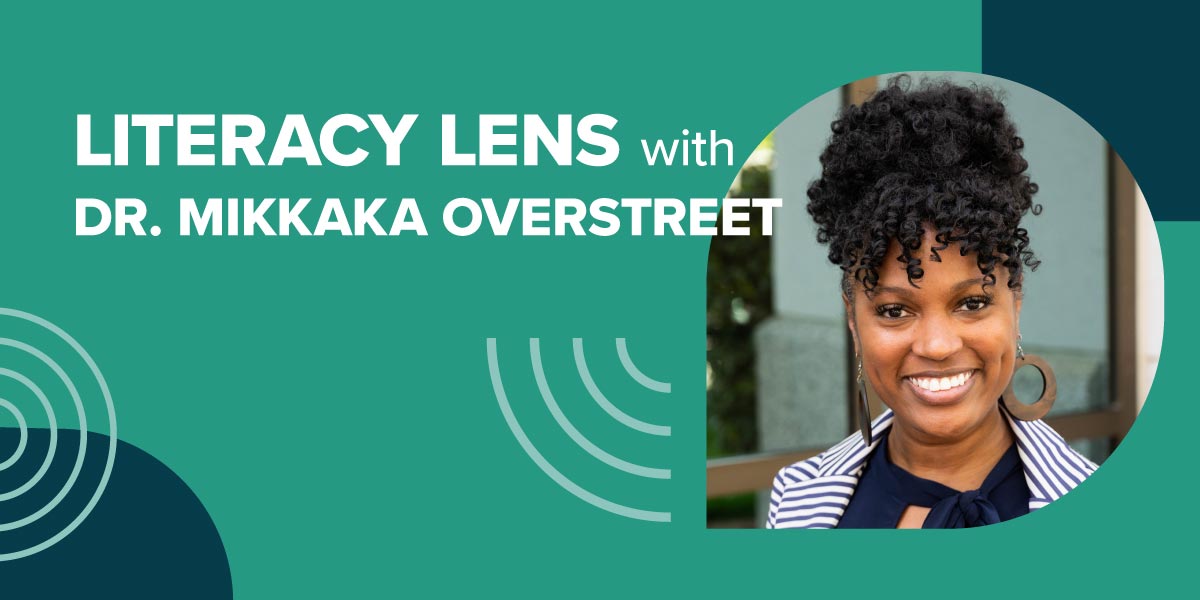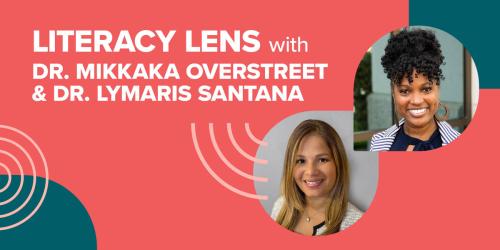Literacy Lens: Literacy as a Tool for Empowerment

In the United States, November is the perfect time to think about our collective role in shaping the future. As educators, we have a responsibility to prepare the next generation. We build their literacy skills so they can be healthy, productive members of society. Furthermore, we empower them to be changemakers, innovators, and critical thinkers who can make informed decisions—whether that’s in the voting booth or in their daily lives.
In his seminal work, “Pedagogy of the Oppressed,” educator and philosopher Paulo Freire argues that education is never neutral. Instead, it either liberates or domesticates. In a liberational education, students move from passive recipients of information to problem solvers who understand their role in improving society.
An empowering literacy education is one that builds on the cultural capital and funds of knowledge children bring to school with them.
Conversely, Freire maintains that there exists a “pedagogy of the oppressed”—a system in which marginalized learners are given inadequate educational opportunities. This domesticating educational experience leaves them ill-prepared for careers that would allow them the upward mobility to join the middle class. For example, recipients of a domesticating education might be denied access to high-quality reading materials and effective teachers. Our students who need the most help are too often given the least.
Educators have the power to change this. Renowned scholars Drs. Gloria Ladson-Billings and Geneva Gay assert that culturally relevant (or culturally responsive) pedagogy goes beyond “just good teaching” to empower diverse students through “academic success, cultural affiliation, and personal efficacy” (Gay, 2010, p. 127). Culturally relevant pedagogy is a “pedagogy of opposition” that counteracts the deficit perspectives often applied to diverse cultures, offering guidance to teachers who seek to improve the academic achievement of students from diverse racial, ethnic, cultural, linguistic, and socioeconomic backgrounds.
Literacy Is a Human Right
Literacy, like any aspect of education, cannot be separated from equity. At Education Northwest, we believe literacy to be a human right. Accordingly, we view access to quality literacy education as a civil rights issue.
The United Nations Educational, Scientific and Cultural Organization (UNESCO) calls literacy a “human right, a tool of personal empowerment and a means for social and human development” (UNESCO, 2005). At its most basic, literacy can be defined as the ability to read and write (and, perhaps, to speak and listen), but these skills cannot be separated from the larger contexts of society that require individuals to use literacy as a means to communicate, interact, learn, and acquire power (Keefe & Copeland, 2011; Perry, 2012; UNESCO, 2005).
Roughly 21 percent of American adults are illiterate. According to a recent 24-country comparative study, only 12 percent of U.S. adults scored in the highest literacy proficiency levels. Illiteracy has harmful impacts on health, finances, and overall well-being. For example, the National Institute of Literacy says 43 percent of adults in the United States with low literacy levels live in poverty. According to the U.S. Department of Justice, 75 percent of state prison inmates are illiterate and/or did not complete high school. The World Literacy Foundation indicates that people with low literacy rates are more than twice as likely to be unemployed and more likely to “experience adverse health outcomes, have poor health literacy, and practice poor health behaviors.” These data underscore a fundamental social, political, and economic reality: In the 21st century, literacy is power.
Empowering Students Through a Culturally Responsive Approach to Literacy
An empowering literacy education is one that builds on the cultural capital and funds of knowledge children bring to school with them. Dr. Django Paris (2012) advocates for the active maintenance of varied cultures and heritages. He rejects the idea that students can only be successful by assimilating into the patterns of mainstream cultures. Instead, he argues, we must “support young people in sustaining the cultural and linguistic competence of their communities while simultaneously offering access to dominant cultural competence” (Paris, 2012, p. 95).
Rather than a “melting pot,” this new paradigm encourages us to view American cultural diversity as a salad in which each ingredient retains its own independent flavor, collectively providing a meal rich in taste and nutrients. The whole is better because of the richness and uniqueness of each part. Too often, public education in America has been more oppressive than empowering for students from diverse cultural backgrounds—more melting pot than salad; more forced assimilation than cultural responsiveness. This is especially true for Native Americans.
Education Northwest has had the great honor of working alongside many Tribes to ensure that Native voices, histories, and identities are centered in classrooms. This is important, essential work that seeks to redefine the relationship between public education and Native peoples. For generations, education was used as an assimilationist tool that included the forced removal of Native children from their families, robbing them of their cultural and linguistic identity, with devastating consequences.
In this webinar, several Education Northwest staff members talk about the lasting legacy of these practices. This presentation also features a discussion on the responsibility of schools and communities to raise consciousness, address inequities, and critically examine practices so that Native students and families have the opportunity to thrive.
Additionally, Education Northwest has partnered with Native Tribes to build culturally sustaining, tribally specific curriculum and teaching materials that provide a more accurate and authentic understanding of tribal governance, history, politics, identity, literature, and contemporary contributions. These instructional tools provide for enhanced literacy opportunities by exploring unique content such as traditional oral storytelling, Native languages, and food sovereignty.
Call to Action
It is time for all educational partners to work toward a system that empowers all students. In a culturally responsive classroom, minoritized students are empowered to be classroom leaders and part of a community that is unified in its aim to effect change and promote equity in school and the world at large.
In such classrooms, we move beyond incorporating holidays or colloquialisms into perfunctory lessons. In such classrooms, students do not feel as though they have to reject who they are and assimilate into the mainstream school culture in order to be successful. Instead, their teachers deliberately and authentically connect to identity, family, and community in the classroom, incorporating students’ real-life experience into the official curriculum and providing opportunities for students to meld home and school cultures—and literacy practices—into a cohesive and empowering whole.
Culturally responsive practices are important for students and families from all backgrounds, but by definition those practices will not look the same in every context. In honor of Native American Heritage Month, we offer the following resources that are specifically focused on working with American Indian and Alaska Native students and families.
Native American Heritage Month: The Stories We Tell
How can we make sure that the stories we teach in our schools not only honor the histories of Indigenous peoples but also respect them as diverse, thriving communities?
Celebrating Native American Heritage Month
We’re excited to share some of the important work being conducted in the Northwest region and beyond to promote success for American Indian and Alaska Native students.
Ways to Become More Culturally Responsive in Engaging American Indian and Alaska Native Families
Centering cultural responsiveness on youth, families and elders and making cultural connections across the curriculum are two of the family engagement strategies shared in this blog post.
Creating a More Welcoming and Culturally Responsive School Community to Engage American Indian and Alaska Native Families
Culturally responsive systems are the key to improving outcomes for American Indian and Alaska Native students in school and in life.
Actions Educators Can Take to Interrupt Narratives That Are Damaging to American Indian and Alaska Native Students
Teachers can engage in self-education and open up their classrooms to culture in forming strategies to end persistent and damaging stereotypes.
References
Gay, G. (2010). Culturally responsive teaching: Theory, research, and practice (2nd ed.). Teachers College Press.
Keefe, E. B., & Copeland, S. R. (2011). What is literacy? The power of a definition. Research and practice for Persons with Severe Disabilities, 36(3–4), 92–99.
Paris, D. (2012). Culturally sustaining pedagogy: A needed change in stance, terminology, and practice. Educational Researcher, 41(3), 93–97.
Perry, K. H. (2012). What Is literacy?: A critical overview of sociocultural perspectives. Journal of Language and Literacy Education, 8(1), 50–71.
UNESCO. (2005). Education for all: Literacy for life.
Literacy Lens with Dr. Mikkaka Overstreet is a monthly blog series that offers insights on literacy and equity, along with tools and resources aimed at providing high- quality, evidence-based, and equitable literacy education.


